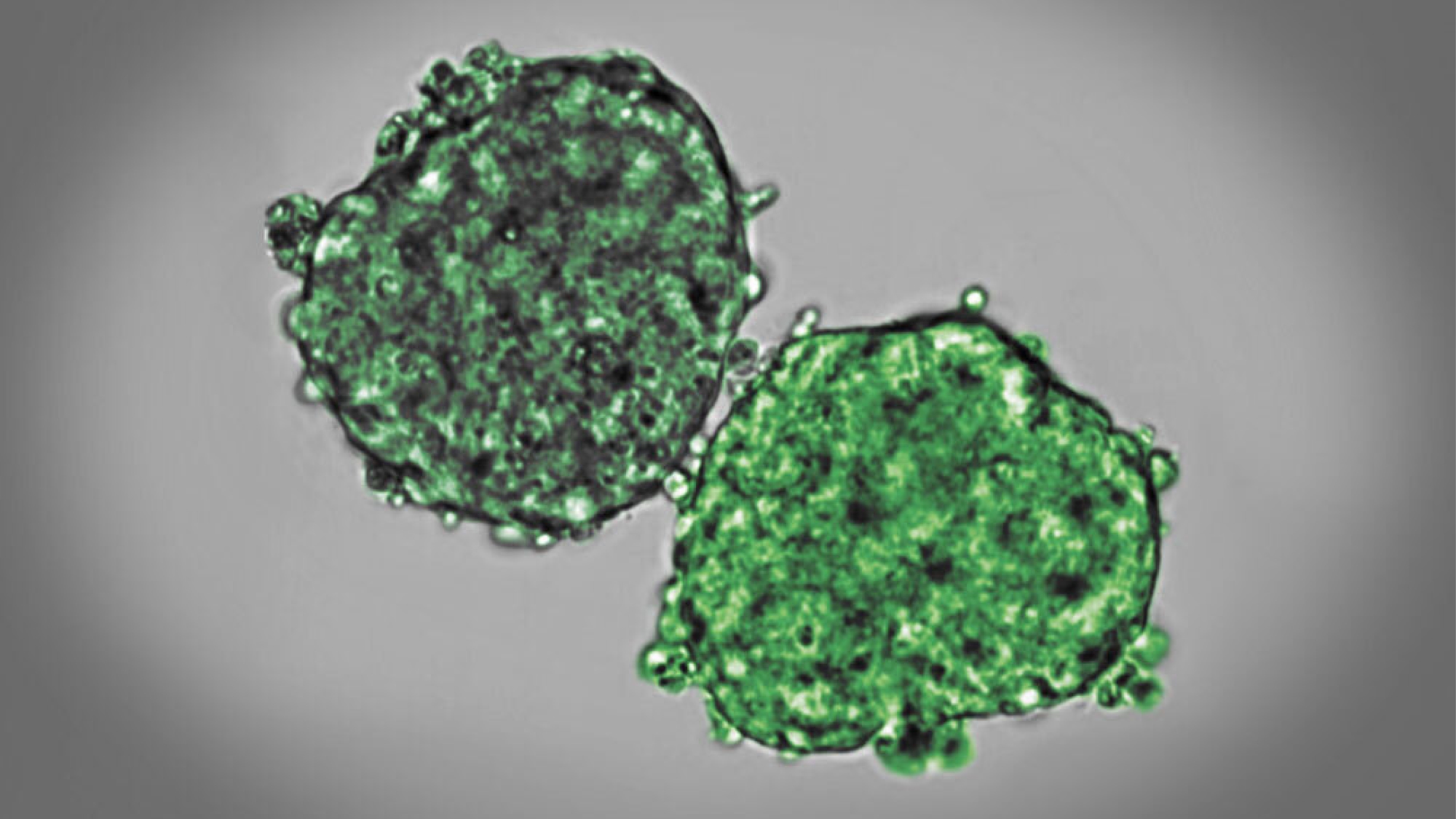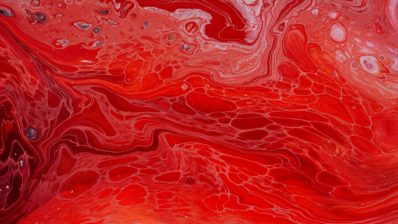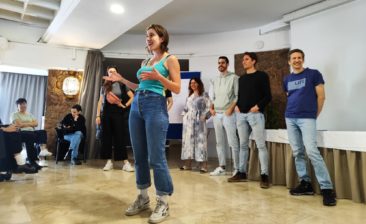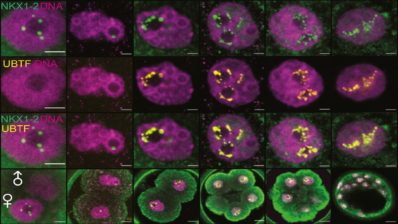David Oriola, a biophysicist at the Vikas Trivedi lab at the European Molecular Biology Laboratory – Barcelona (EMBL Barcelona), took this photo showing two aggregates of mouse stem cells 24 hours after their aggregation. It’s an image from his latest study on the fusion of embryonic stem cells.
Oriola is studying the mechanical properties of tissues and how these change during embryonic development. That is why he combines experiments with mathematical models to explain how cells are organized in tissues. As he explains, “before the quarantine, I was studying the fusion of embryonic stem cell aggregates, but I only saw a partial fusion. I later discovered that this process is known as arrested coalescence and is a common phenomenon in soft matter physics.” But the models that were commonly used to explain the fusion of cellular aggregates did not allow for the possibility of this phenomenon.
Taking advantage of the confinement and the fact that he could not carry out experiments, Oriola dedicated himself to redoing calculations and mathematical models. He observed that the mathematical models they used did not take into account the viscoelastic characteristics of biological tissues, but instead described them as purely viscous fluids. For this reason, Oriola proposed a new model that considers elasticity as a property of tissues. And, yes, this one can explain the observed experimental results.
Thus, this new model provides a fast and cheap method to study the mechanical properties of tissues. But, in addition, as Oriola says, “this model may have implications far beyond biology, since it could be used to characterize the material properties of microemulsions, for example.”
Want to see your photo here? Send us images related to science or life at PRBB a ellipse@prbb.org.
Oriola D., et al. Arrested coalescence of multicellular aggregates. Soft Matter 5th May 2022. 10.1039/D2SM00063F






